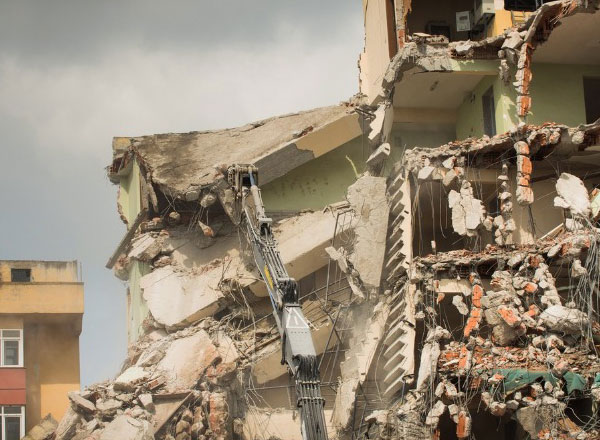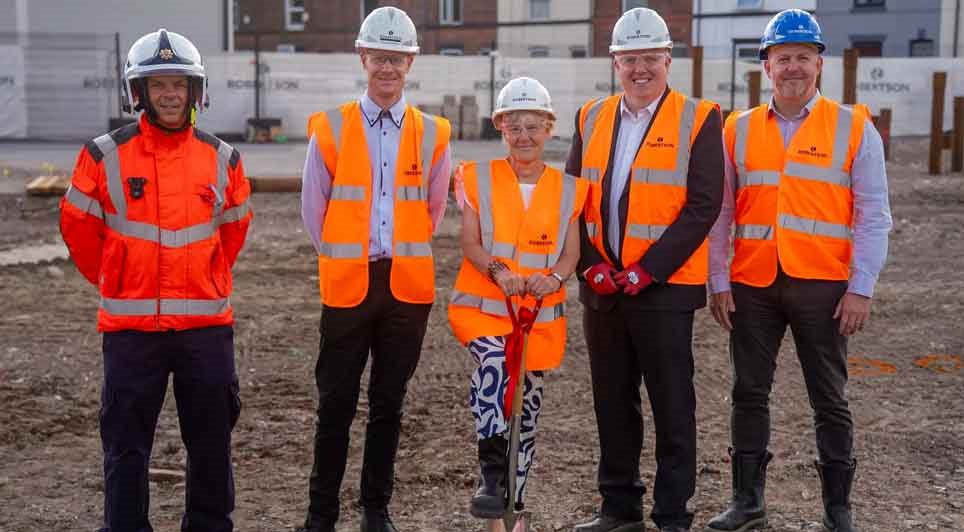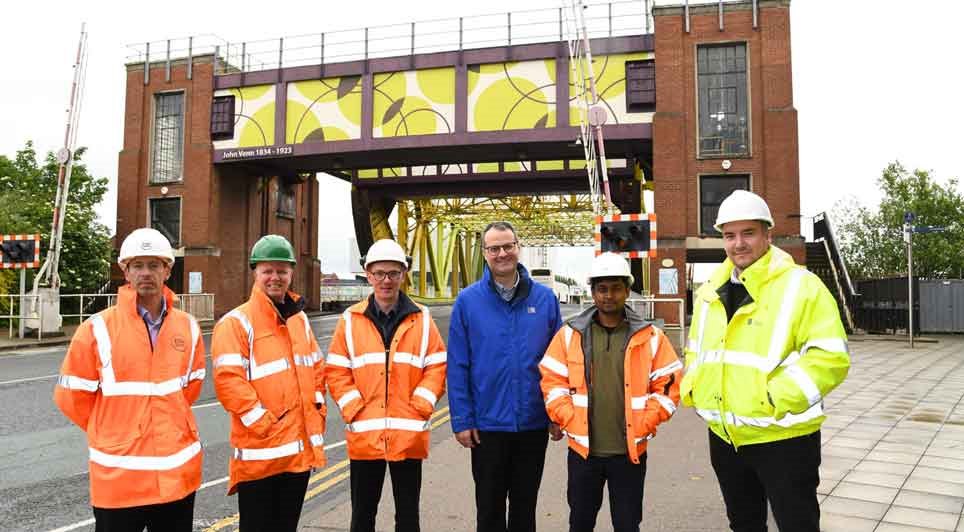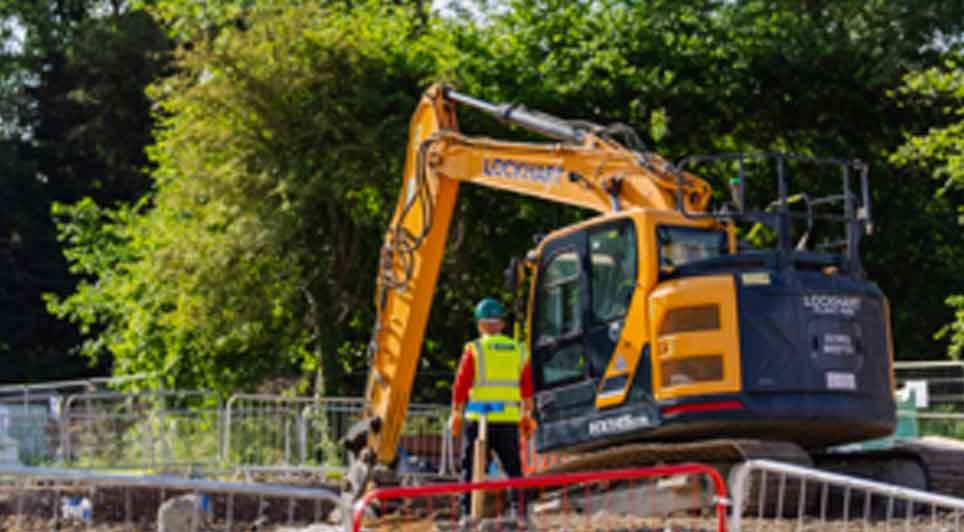Engineers from Heriot-Watt's Institute for Infrastructure and Environment have designed a 'sacrificial device' for buildings that will absorb the impact of earthquakes or blasts, preventing collapse and reducing the damage and residual drifts that can render buildings uninhabitable.
Current European 'earthquake-proof' buildings were designed to prevent collapse in the event of a strong earthquake. However, they do not prevent extensive damage that is difficult to repair, or residual drifts. If buildings experience one or both of these factors, the cost of repairs can become prohibitive, and demolition may be the only viable option.
Dr George Vasdravellis, Assistant Professor in Structural Engineering, used experimental testing and computer simulations to prove that his new system minimises the damage caused to buildings up to 10 storeys high in an area of high seismicity, with one in 475 year seismic events.
Now, he and his team are adapting the design for taller buildings to ensure that the novel, minimal-damage steel frame will address the disadvantages of conventional building design.
Dr Vasdravellis said: "The non-repairable damage and residual deformations that conventionally-designed buildings experience after a seismic event represent a severe socio-economic loss. We need new methods of resilience to tackle this issue.
"We have developed an innovative steel frame that could achieve high seismic resilience, structural and non-structural damage control, and minimise residual deformations.
"The system makes use of 'sacrificial devices' made of stainless steel material. The devices are placed strategically in the structure, so that they are the only damaged components during earthquake loading.
"In the aftermath of a strong seismic event, they can be easily replaced with new ones, so that the building can return to its usual occupation very quickly.
"The inherent properties of stainless steel results in the significant reduction of the residual drifts after a strong earthquake.
"Through experimental testing and numerical simulations, we found that our system had negligible residual drifts under loading corresponding to the 'design earthquake', compared to conventional building designs, which experienced drifts that were four to five times larger."
The ability to retrofit the device and make it commercially viable for architects and construction firms is at the forefront of Dr Vasdravellis's mind.
He continued: "In Greece and Italy, we've watched new areas become seismic, where previously there had been little activity. We must also consider, unfortunately, the impact of explosions or other attacks on buildings that could impose extreme loading conditions.
"The sacrificial devices will mitigate progressive collapse due to explosions, or other extreme events, that result in the loss of one or more columns in the building. Therefore, we are further developing the system for multi-hazard mitigation.
"It is not enough to 'earthquake-proof' new buildings; we need simple, effective devices like this that can protect our existing built environment and heritage, minimising damage and costs in the event of a seismic event or blast."
Dr Vasdravellis was awarded £140,000 by the European Commission for the next stage of his research into earthquake engineering.
(MH)
Construction News
25/10/2017
New Device Launches To Shatter Current Earthquake-Proofing Practice


02/07/2025
Construction is officially underway on the new Whitefield Community Fire Station, part of Greater Manchester Fire and Rescue Service's (GMFRS) £38 million Estates Improvement Programme.
Led by Robertson Construction North West, the project will replace the former fire station on Bury New Road with

02/07/2025
Hull City Council has officially appointed Esh Construction to lead a major repair and strengthening programme on Drypool Bridge, one of the city's key transport links.
The project will be delivered in partnership with engineering consultancy Mason Clark Associates.
Work will begin on the south s

02/07/2025
Award-winning housebuilder The Hill Group has announced record financial results for the year ending 31 March 2025, marking its second consecutive year of historic growth.
The company reported a turnover of £1.15 billion and a pre-tax profit of £90.5 million, completing more than 2,800 new homes a

02/07/2025
Women in Construction Anglia (WICA) and Suffolk Chamber of Commerce have voiced strong support for the government's new plans to increase the construction workforce by 100,000 people annually.
The announcement follows the launch of the first Construction Skills Mission Board, attended by Work and P

02/07/2025
Huddersfield Station will undergo a significant upgrade this autumn as part of the multi-billion-pound Transpennine Route Upgrade (TRU), with a full 30-day closure scheduled from Saturday 30 August to Sunday 28 September 2025.
The closure represents a major milestone in the delivery of a faster, gr

02/07/2025
Procurement Hub, part of Places for People (PfP), has confirmed a two-year extension of its flagship Major Projects Framework 2 (MPF2), extending its term until 2028 after achieving more than £300 million in social value since its launch in 2022.
Designed to deliver a more efficient, equitable, and

02/07/2025
Two Galliford Try employees have received commendations at this year's British Ex-Forces in Business Awards, recognising their outstanding contributions and leadership within the construction industry after transitioning from military service.
Pam McNeill, Business Assurance Manager for Galliford T

02/07/2025
The government has announced a landmark £39 billion investment to deliver around 300,000 new social and affordable homes across the UK over the next decade, in a major bid to tackle the housing crisis and provide secure housing for families and children stuck in temporary accommodation.
Under the n

02/07/2025
Hydrogen sulfide (H₂S) is one of the most dangerous gases found in industrial environments.
Colourless, highly toxic, and often referred to as the "silent killer", it's particularly hazardous because it can quickly deaden the sense of smell, giving workers a false sense of security.
Even a

02/07/2025
The Federation of Master Builders (FMB) has welcomed the Construction Leadership Council's (CLC) new Health, Safety and Wellbeing Strategy, describing it as a much-needed step toward driving change across the construction industry.
FMB Chief Executive Brian Berry joined over 140 industry leaders at
 UK
UK Ireland
Ireland Scotland
Scotland London
London











